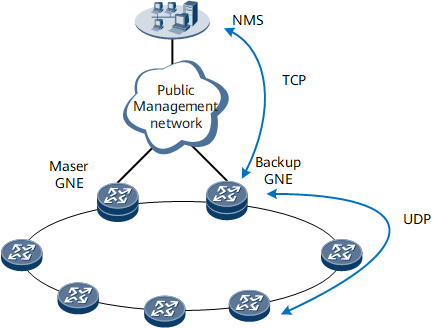SSL
SSL authenticates the client and server and encrypts data transmitted between the two parties, which improves network security.
Some traditional protocols do not have a security mechanism. As a result, data is transmitted in plaintext. To improve security, configure SSL on the clients and server. SSL's data encryption, identity authentication, and message integrity check mechanisms ensures security of data transmission.
On the DCN network shown in Figure 1, an SSL policy is configured on and a trusted-CA file is loaded to the GNE and NMS to verify the identity of the certificate owner, sign a digital certificate to prevent eavesdropping and tampering, and manage the certificate and key. After the GNE and NMS are authenticated and a connection is established between them, data can be encrypted and transmitted between them.
